*Updated in 2025
Public health is trapped in an inverse relationship. It supports many needs with few resources.The Commonwealth Fund's report, U.S. Health Care from a Global Perspective, 2022: Accelerating Spending, Worsening Outcomes, found that the U.S. spends twice as much on healthcare than the average, high-income country. In particular, we spend more on healthcare treatment and less on prevention, a primary focus of public health.
In CNN's response to The Commonwealth Fund's 2022 report, Jacqueline Howard interviewed Dr. Georges Benjamin, executive director of the American Public Health Association, who stated, “[W]e don’t do as much primary care prevention as the other nations, and we still have a public health system, which is fractured . . . [We also] under-invest compared to other industrialized nations in societal things. They spend their money on providing upfront support for their citizens. We spend our money on sick care.”
If you work in a health department with a large underserved population, you are more aware than most of these realities. You may not be as sure, however, of the best way to meet critical community needs with limited available resources.
The power of the Community Health Assessment
A great way to identify these pressing needs is to administer an effective Community Health Assessment, which the Public Health Accreditation Board defines as “a systematic examination of the health status indicators for a given population that is used to identify key problems and assets in a community.”
PHAB requires a CHA for its accreditation program, and health departments report multiple benefits from striving for accreditation, including:†
- more quality and performance improvement opportunities and a “strengthened QI culture;”
- improved ability to identify and meet health needs and use evidence-based practices;
- increased collaboration within and outside of the department;
- better resource utilization and more funding opportunities; and
- enhanced credibility, reputation and collaboration.
The CHA also meets the criteria for Mobilizing for Action through Planning and Partnerships.* In its new 2.0 version, MAPP is a well-established strategic planning process to improve community health, and it supports PHAB’s Domain 1 standards within its Standards & Measures for Initial Accreditation (2022 Version).
As close to a stress-free CHA as you can get
A CHA that includes data-rich analysis and robust survey responses helps your organization build process and population health strength. That kind of CHA can generate big ideas for your community health initiatives, improve collaboration and shift resources to where they’re needed most.
For every need your team faces, 10 more are lined up behind it. That’s where DataGen comes in. We’ve designed an assessment solution — CHA Advantage — that meets MAPP CHI objectives and PHAB Domain 1 standards and offers:
- a streamlined process with clear guidance for collaboration;
- customizable templates and standardized content for your survey and final written report; and
- analyses of multiple data sets at the ZIP code level with recommendations from our experts.
CHA Advantage includes the Client Plan Timeline. This plan maps all CHA steps, actions and deliverables to a six-to-nine-month schedule and incorporates all MAPP CHI phases. (Did you know that those phases changed in 2022? Updates will continue throughout 2023 and include guidance on community partnerships, strategic priorities and survey interpretation).
MAPP 2.0 shows just how important it is to re-examine your CHA approach. The organization that created the model agrees. The National Association of County and City Health Officials notes that MAPP updates will “make it more community-driven, and grounded in concepts of health equity.”
When assessments improve, public health practices and results can improve too.
It’s not just the time saved. It’s what you do with it.
It can be hard to visualize how abstract things like process design create more efficient community interventions. Here are some examples:
Would you rather…
- scramble to find, capture and organize community data — or work with a partner that can provide pre-packaged data sets that help you identify needs faster?
- create content from scratch with every survey, staff change and re-organization — or use pre-populated CHA reports, applying the time saved to identify more evidence-based practices?
- carry the weight of unmet community needs — or address those needs through informed decision-making that could lead to more free cancer screenings, food banks and mobile health clinics in high-risk neighborhoods?
If you’d like to strengthen and simplify your CHA process, start today with DataGen's CHA Advantage solution.
*The National Association of City and County Health Officers created the MAPP strategic planning process.
†NORC at the University of Chicago. Assessing Outcomes from Public Health Accreditation: Evaluation Findings. June 2022 (update). https://phaboard.org/wp-content/uploads/NORC-Evaluation-Slides.pdf


Comments
Post a Comment